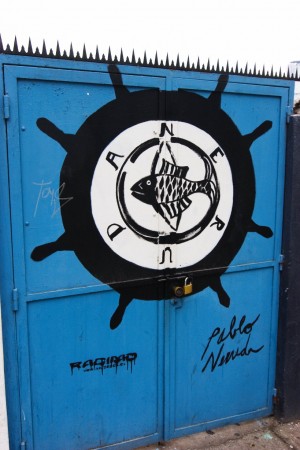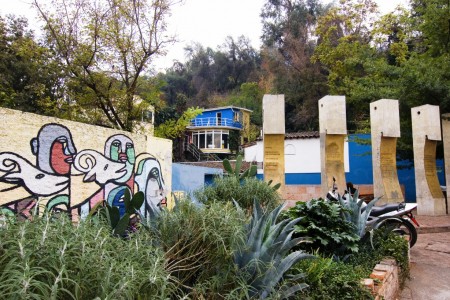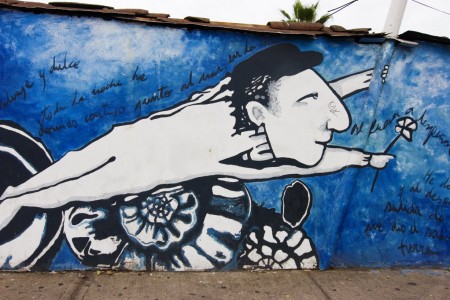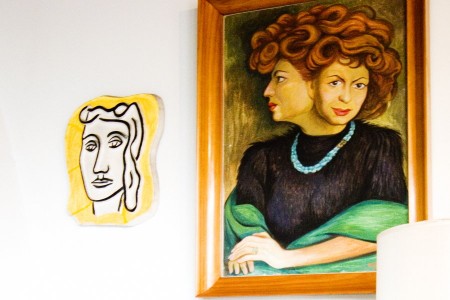My last afternoon in Santiago. I’ve left my luggage at the hotel while I have one final meal at Akarana, a place Liz recommended for their oysters. Plus I thought I might finally be able to get a terremoto cocktail.
Well, that’s a mistake. When I order a terremoto from my waiter, Emiliano, he goes off and gets the owner of the restaurant. Who turns out to be a spunky little gal from New Zealand named Dell Taylor.
“We don’t make drinks like that here,” she says rather severely.
“No?”
“Definitely not.”
What is it about this terremoto cocktail that so disgusts everyone? Is it the rot-gut wine, pipeño, that they use? Or the pineapple ice cream? I’ll tell you, I’ve been in at least twenty different restaurants and bars in Santiago and not a single place would make me a terremoto cocktail. So now I’m practically desperate for one. Just to see if it’s possibly as bad as you would think.
Although Dell won’t make me a terremoto, she offers to personally make me a pisco sour which she says is the best in all of Santiago. Well, as far as I’m concerned, that’s not saying much. I’ve yet to have one that comes even close to a poorly made margarita. But what the hell. It’s my last day here. Might as well have a pisco sour.
A few minutes later she’s back with my drink. And then she stands there, at my table, watching me take a sip.
“Well?” she says.
You know what? She’s right. This is the best damn pisco sour I’ve had. And I tell her so.
She looks smug. “What’d I tell you?” she says.
Then she sits down at my table and tells me how all the pisco sours in Santiago are crap because everyone uses some god awful mix at the bar. “Got to make it with fresh lemon juice. And a decent pisco. Doesn’t have to be the best pisco but it’s got to be fairly good, doesn’t it?”
I’m impressed enough with Dell’s pisco sour that I order a second, to go with my oysters on the half-shell and a dish of chargrilled marinated octopus, and then ask her for her recipe. For the drink. And here it is: The best damn pisco sour in Santiago.
Akarana Pisco Sour
In a cocktail shaker with four ice cubes, add:
–1 1/2 ounces of good pisco (she likes Aba)
–3/4 ounce fresh lemon juice
–spoon full of sugar (taste drink for sweetness)
–“a knob of egg white” (about 1/3 of an egg white)
Shake it up good in the cocktail shaker, pour into a tall flute, and add a drop of Angostura bitters on the top. “Just a dot—no more.”
Enjoy!







Recent Comments